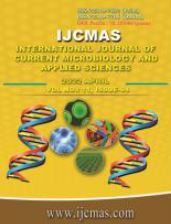


 National Academy of Agricultural Sciences (NAAS)
National Academy of Agricultural Sciences (NAAS)

|
PRINT ISSN : 2319-7692
Online ISSN : 2319-7706 Issues : 12 per year Publisher : Excellent Publishers Email : editorijcmas@gmail.com / submit@ijcmas.com Editor-in-chief: Dr.M.Prakash Index Copernicus ICV 2018: 95.39 NAAS RATING 2020: 5.38 |
Mangrove are native to unique stressful habitat and mangrove-associated microbes may be one of the reasons behind the survival of this plant in this habitat. Therefore, it is necessary to explore the microbial diversity from the unstudied mangrove ecosystem because exploration of microbial associates of mangroves may help full to screen such potential specialized microbial strains that are as unique as their habitat. Samples of 8 different locations along the Arabian Gulf and the Red Sea were collected for enumeration and isolation of microbes based on different general and selective agar mediums. The results revealed that the maximum colony counts of total (1.01 × 107 CFU mean /g dry soil), fungi (1.18 × 104 CFU mean /g dry soil), and actinomycetes (5.93 × 104 CFU mean /g dry soil) were observed in L1 (MRS soil), L44 (MRS soil), and L3 (MRS soil) respectively. While minimum colony counts of total (5.32 × 104 CFU mean/g dry soil), fungi (2.59 × 102 CFU mean/g dry soil) and actinomycetes (2.61 × 10 CFU mean/g dry soil) were observed in L47 (MS soil), L3 (MS soil), and L4 (MS soil) respectively. L3 (MRS soil), L2 (MRS soil and MS soil), L1 (MRS soil), L44 (MRS soil), and L5 (NMRS soil and NMS soil) showed the growth of all studied groups of microbes other than sulfur oxidizers, while water samples, L3 (MSW water), L2 (MSW water), L47 (MSW water), L4 (MSW water), and L1 (MSW water) showed growth of limited groups as compared to soil samples.
 |
 |
 |
 |
 |